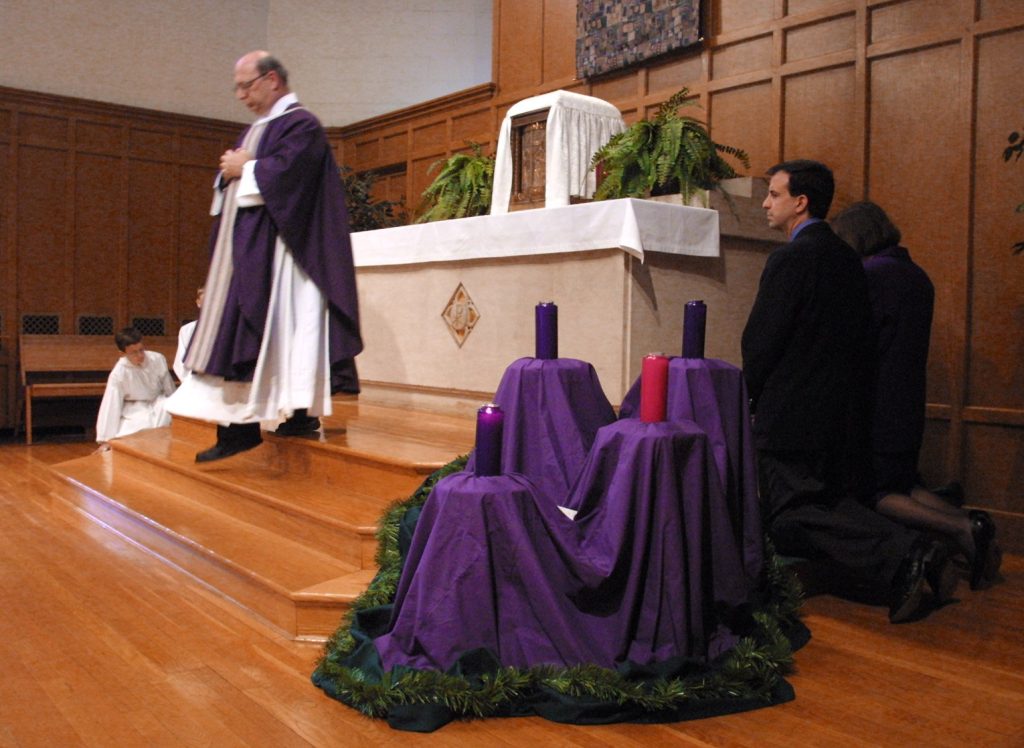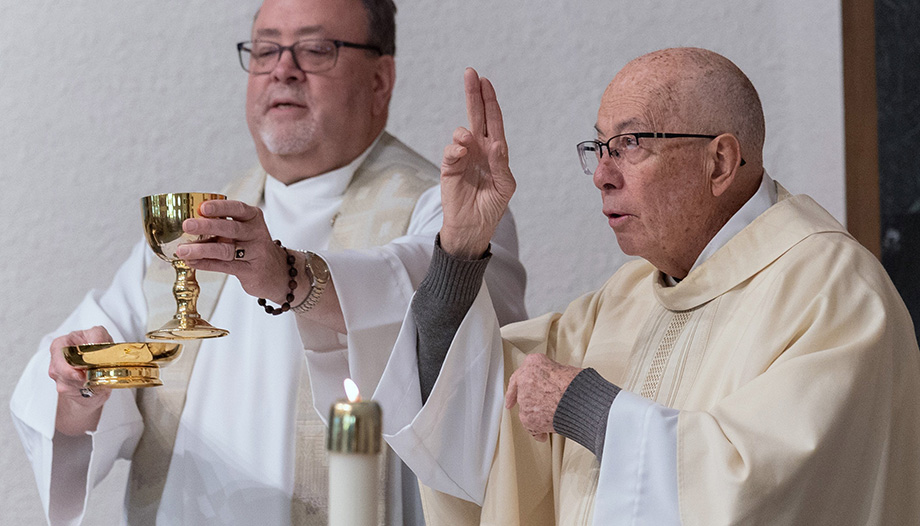




















In this new fascicle about different aspects of Catholicism, we will refer to the clothing and vestments of the presbyter, that is, the priest who, after the diaconate, has been ordained and has not received episcopal ordination.
The bishops - including the Holy Father - are properly priests too, but they have their own uniqueness in terms of dress and, in general, the vestments they wear for the liturgy and divine worship.
What do priests wear on a daily basis? Why do they dress the way they do?
Article 284 of the Code of Canon Law provides that ".Clerics must wear a dignified ecclesiastical dress, according to the norms given by the Episcopal Conference and the legitimate customs of the place.". This norm refers to clerics, which includes priests.
The presbyter should be recognizable above all by his behavior, but also by the way he dresses or presents himself. His identity and "being of God"-as one of the faithful consecrated to the dispensation of his saving mysteries-and of the Catholic Church should be immediately evident to all. His belonging to God - to the sacred, as a consecrated person - must be constantly communicated. It is the right of all - particularly of the Catholic faithful - to be able to recognize by their external appearance those who can dispense their spiritual help.
The priest's clothing should be an unmistakable sign of his dedication and of the identity of one who carries out a public ministry. To do otherwise would be to prevent those whom he intends to serve from being able to address him at any time and for any need.
It could be said that the presbyter's vestments are the exterior sign of an interior reality. Something that, by the way, happens with so many other offices that have their own uniform.
The vestments have varied over the centuries. In the following we will refer to what the presbyter wears today, which is indicated by the ecclesiastical authority. It should be noted that other religious professions use the same -or very similar- clothing as Catholicism, specifically Protestantism.
Clergyman and cassock


On the one hand, we must refer to the cleriman -or clergyman- garment referring to the shirt -usually black, gray or white- where the collar collar is placed, which is usually white. The collar collar can be replaced by a strip that is inserted in two openings of the collar of the shirt, leaving a white square under the throat. In addition, it is possible to have pants combined with the shirt, and even a jacket. Some describe the cleriman as a practical alternative to the cassock, which we will now discuss.
– Supernatural cassock o talar suit -it is so called because it reaches the heels- is like a long dress or tunic with a front closure. It is usually black, as a reminder that the wearer has died to the world and has consecrated himself to the divine or celestial. Although in tropical or hot climate countries it is also worn in white.
And what do priests wear at Mass and other liturgical celebrations?
To dignify the sacred character of their ministry, priests wear a series of sacred vestments - which may be blessed - during liturgical celebrations.
In particular, we will refer to those of the Eucharist or Holy Mass.
Chasuble, stole, alb and amulet
– Supernatural chasuble is the vestment that the presbyter wears over the other garments. It consists of a long piece with an opening in the center to pass the head, and equally open on the sides to show the arms. It falls in front and back from the shoulders to mid-leg. It symbolizes charity, which makes the burden of Jesus Christ sweet and gentle.
– Supernatural stoleThe priestly sash, symbol of priestly authority, is a kind of band that hangs from the priest's neck, and can be adjusted with the cincture over the alb and under the chasuble.
To dispense the sacrament of reconciliation, the presbyter may wear a purple stole, which suggests the penitence proper to confession. And to distribute the Eucharist - and in general for the Eucharistic acts - he wears a white stole.
The alba consists of a wide white tunic -hence its name- that covers the presbyter from top to bottom and is fastened at the waist with another ornament. The cingulum -The belt symbolizes the purity of the heart that the clergyman carries to the altar.
The amito is the rectangular linen cloth that the presbyter places over his shoulders and around his neck before putting on the alb. It can be fastened with crossed ribbons at the waist.
The colors
Various colors are used for the chasuble and stole: white, for feasts and solemnities, celebrations of non-martyred saints and feasts of the Lord; green is used during ordinary time; red for the feasts of the martyrs and special days of the holy apostles and feasts of the Lord referring to the Passion; purple for Advent, Lent, Holy Week and -together with black- for Masses for the dead.


In addition, the color pink can be used twice a year: on the third Sunday of Advent - the third Sunday of Advent - on the second Sunday of the month.please visit- and the fourth Sunday of Lent -laetare- to remember the proximity of Christmas and Easter. The blue, as a liturgical privilege, can be used in Spain and other territories that were Spanish territory for the solemnity of Christmas. Immaculate Conception.
In addition, even if they do not form part of the vestments that clothe the priest, they may be present at the Mass on conopeo -or tabernacle covers-, the calyx cover and the folder that carries the corporals. All in the same color as the chasuble and stole, as appropriate.












